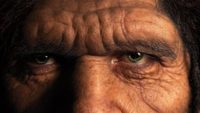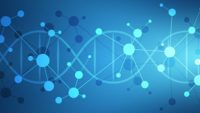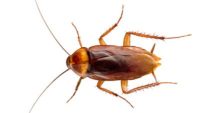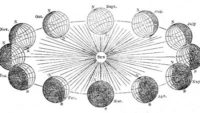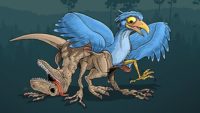Would animals have to run for their lives as soon as they got off the ark? Would some go extinct as they got hunted by predators? …read more Source: creation.com
By Dr. David Menton As far as stereotypes go, cavemen make easy targets—especially when transplanted into the twenty-first century. …read more Source: AIG Daily
Can biological pigment molecules really survive over a billion years? …read more Source: creation.com
Why do we have solar wind? Startling discoveries by Voyager 2 show its great benefits to life. …read more Source: creation.com
Loved or loathed, rabbits certainly fit the biblical narrative, not an evolutionary one. …read more Source: creation.com
By Ken Ham A recent popular science article announced that “genes that have evolved from scratch are both more common and more important than previously believed.” These so-called “orphan genes . . . appear to have no relatives and are often responsible for unique characteristics and abilities of organisms.” Of course, evolutionists attribute the existence of such genes to naturalistic evolution. But did brand-new genetic information really evolve? Dr. Nathaniel Jeanson, who earned his PhD in cell and developmental biology from Harvard University, shared this with me about these two new studies: In these studies, evolutionists continued their quest to [More]
Wooly mammoths once roamed North America, northern Europe, and Siberia. Possibly the last of their kind perished as a dwindling population on Wrangel Island, northeast of Siberia. Who wouldn’t wonder why wooly mammoths no longer roam our planet? The process of gathering clues to their extinction can evoke the same feelings found in good mystery novels. New research into ancient DNA gives another solid clue toward two old culprit theor… More… …read more Source: icr.org
Homo erectus and modern human origins …read more Source: creation.com
Many students are told about how increasing coal soot during Britain’s 18th and 19th century industrial revolution drove the color change observed in black peppered moths. The famous peppered moth story is one of the most persuasive evidences cited in textbooks in support of evolution. But recent genetic findings are raising questions about the accuracy of the scenario told by evolutionists. Students are taught that o… More… …read more Source: icr.org
By Dr. Gordon Wilson Despite their bad reputation, cockroaches were designed to do good things. …read more Source: AIG Daily
Carnivorous dinosaurs pre-Flood: Wouldn’t lots of apex predators be problematic for the biblical creation perspective? …read more Source: creation.com
In reality, only a small sampling of climate scientists believes we are facing imminent doom. So why all the insistence on anxiety and panic? …read more Source: AIG Daily
A new model that claims Adam and Eve can be the genealogical ancestors, but not the genetic ancestors, of all people alive today, after people evolved from apes, fails all biblical tests. …read more Source: creation.com
By Dr. Danny R. Faulkner Today is February 29—Leap Day 2020! This date occurs once every four years. Why do we have this quadrennial practice? …read more Source: AIG Daily
Evolutionary biologists promote strange-looking Chinese fossils that resemble the in-between creatures the researchers have long sought. One strand of dinosaurs looks like birds, some birds look a bit like certain dinosaurs, and some birds that certainly could not fly like today’s birds. These can all seem like the shells in a shell game. The illusionist gets to control what we see. The latest feathered dinosaur fossil shows anatomy t… More… …read more Source: icr.org
By Bodie Hodge Distant starlight is seen as one of the biggest difficulties to trusting God’s Word about a young universe and earth. …read more Source: AIG Daily
Are the ‘walking’ actions of skates an evolutionary step between swimming and walking on land? …read more Source: creation.com
Most people don’t think about the mental process of recognizing locations. We just take it for granted. Any sort of complicated manmade device, like a modern cell phone or car, constantly monitors its spatial position. But what about living creatures—do they have a similar design feature? Scientists recently identified a type of brain cell that acts like an internal compass that puts human engineered systems to … More… …read more Source: icr.org
Ingenious depth perception of jumping spider eyes has inspired designers of micro-robot eyes. …read more Source: <a href=https://creation.com/a/14051 target=_blank title="Micro-robot eyes inspired by jumping spider” >creation.com
By Dr. Danny R. Faulkner Nicolaus Copernicus was born 547 years ago today (AD 1473). Copernicus often is viewed as the father of heliocentrism …read more Source: AIG Daily
Sneak peek of a powerful article from the latest Creation magazine. ‘Stone Age’ relic of post-Babel construction? …read more Source: creation.com
What are the six types of data and how do they support rapid plate movement during the Flood? …read more Source: creation.com
Were they carved by the glaciers or was it something else? …read more Source: creation.com
By Ken Ham Evolutionists often refer to birds as dinosaurs—and, yes, they’re serious; they really believe birds are dinosaurs. I’ve read statements from evolutionists saying that dinosaurs are not extinct: that they are feeding at our backyard bird feeders! The famous nature documentary narrator and naturalist Sir David Attenborough even referred to the roadrunner as a dinosaur in a recent program on North American wonders of nature. In calling birds dinosaurs, evolutionists often focus on feathers and so-called “feathered dinosaurs,” but it takes a lot more than feathers to turn a dinosaur into a bird! In calling birds dinosaurs, evolutionists [More]
By Dr. Terry Mortenson The controversies regarding the early chapters of Genesis and the geological discoveries and theories were part of a complex movement of thought which pulsed through the educated minds of Europeans. …read more Source: AIG Daily
By Ken Ham From space, the earth is a beautiful blue and green sphere. Of course, that’s not surprising—our planet is 70% covered by water. But what would you see if all the water was whisked away? A planetary scientist formerly at NASA recently remade a 2008 video that shows how the earth would appear if the oceans evaporated (it’s a pretty incredible video). But what does this have to do with creation? <!– –> …read more Source: Ken Ham AIG
Two recent findings in biology add confirmation that biological functions are best characterized by engineering principles. This research describes a number of sophisticated internal clocks that control the timing of key events during embryological development. These clocks are part of systems that function just like a construction schedule used to guide decisions by human project managers. ICR has been developing a theory … More… …read more Source: icr.org






















